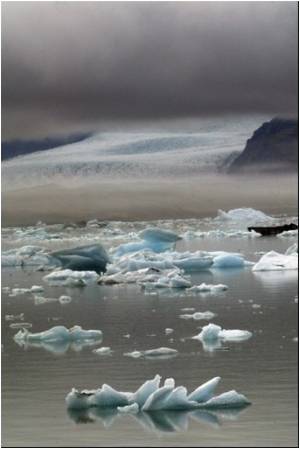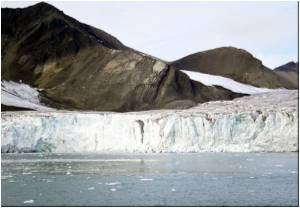
This back-from-the-dead trick has implications for how ecosystems recover from the planet's cyclic long periods of ice coverage, the researchers said.
The group first observed the changes while exploring an area around the Teardrop Glacier, high in the Canadian Arctic.
The glaciers in the region have been receding at rates that have sharply accelerated since 2004, at about 3-4m per year, exposing land that has not seen light of day since the so-called Little Ice Age, a widespread climatic cooling that ran roughly from AD 1550 to AD 1850.
Catherine La Farge, lead author of the study, recalled that while they were walking along the edge of the glacier margin they saw huge populations of bryophytes coming out from underneath the glacier that seemed to have a greenish tint.
Unlike land plants, bryophytes do not have vascular tissue that helps pump fluids around different parts of the organism. They can survive being completely desiccated in long Arctic winters, returning to growth in warmer times.
Advertisement
"When we looked at them in detail and brought them to the lab, I could see some of the stems actually had new growth of green lateral branches, and that said to me that these guys are regenerating in the field, and that blew my mind," she told BBC News.
Advertisement
The findings appear in Proceedings of the National Academy of Sciences.
Source-ANI









